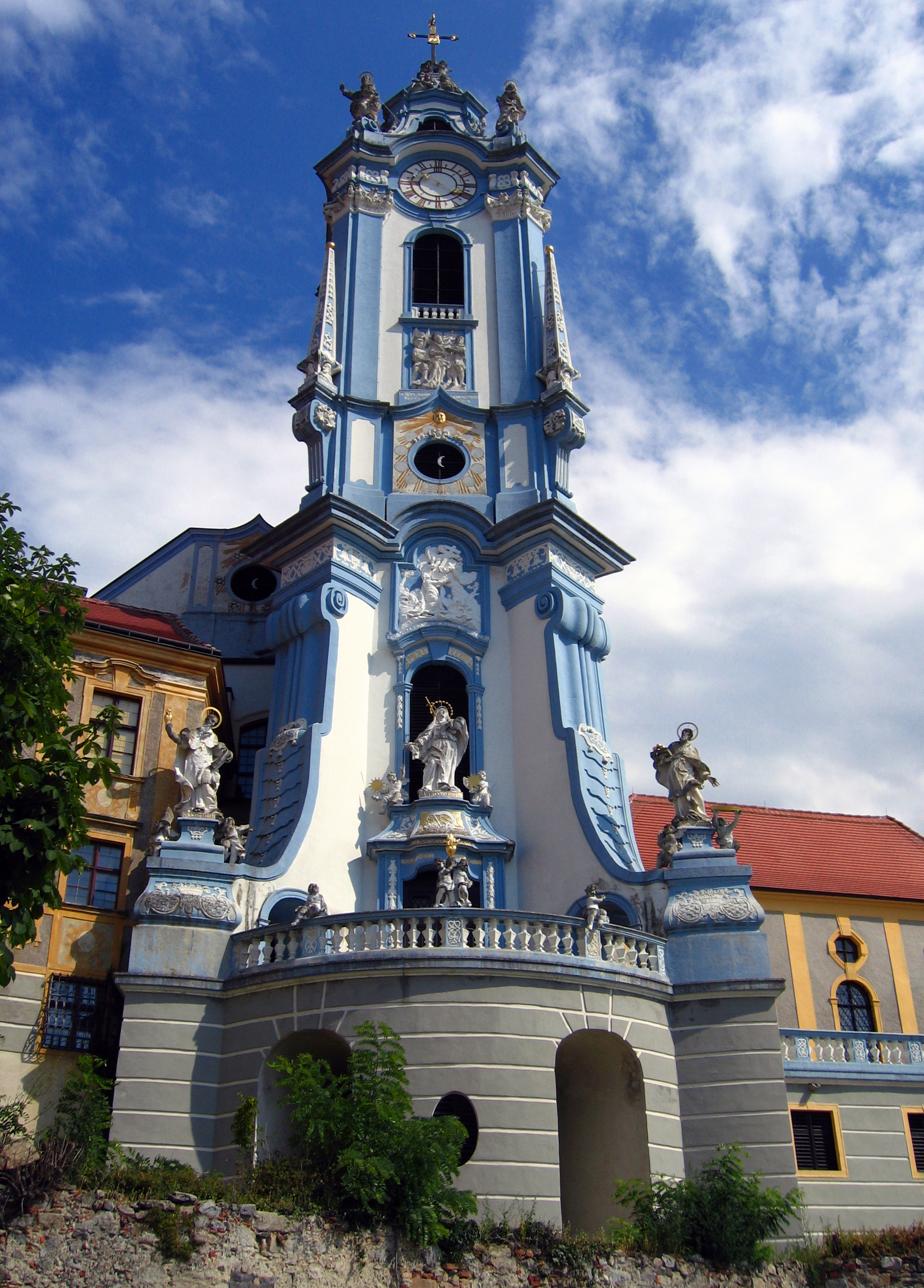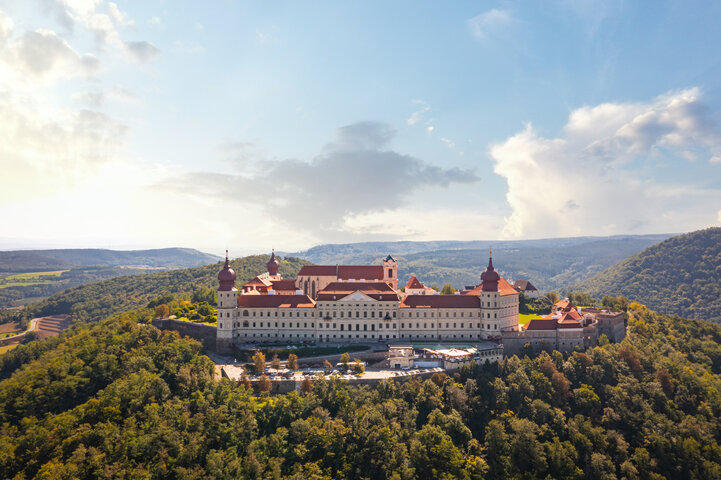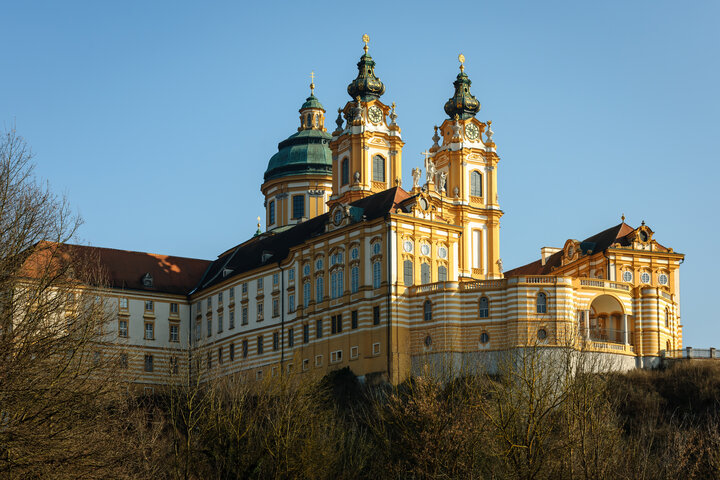Culture
Dürnstein Abbey – Baroque jewel on the Danube
Stift Dürnstein – A Baroque Jewel on the Danube
Stift Dürnstein, perched on the banks of the Danube in the Wachau Valley, is one of the most famous and striking monasteries in Lower Austria. Known for its stunning Baroque architecture and iconic blue-and-white church tower, this former Augustinian monastery attracts thousands of visitors each year. Situated in the heart of the UNESCO World Heritage Wachau region, Stift Dürnstein stands as an important cultural and religious landmark.
History of Stift Dürnstein
Stift Dürnstein was founded in 1410 as an Augustinian Canons monastery. It was part of a larger spiritual and religious network that played a significant role in the medieval region. However, Dürnstein was already famous by the 11th century, particularly due to the imprisonment of Richard the Lionheart, who was held captive in the nearby castle of Dürnstein.
The monastery experienced its golden age in the 18th century when it was rebuilt in the Baroque style. Under the direction of renowned Baroque architects Jakob Prandtauer and Joseph Munggenast, the monastery was transformed into the magnificent structure seen today. The distinctive blue-and-white church tower, visible from afar, has become one of the iconic landmarks of the Wachau Valley.
In 1788, the monastery was secularized, and the Augustinian Canons left. Today, the monastery serves as a venue for cultural events and is a popular destination for visitors eager to explore its rich history and Baroque splendor.
Architecture and Key Highlights
The Baroque architecture of Stift Dürnstein is a masterpiece of harmony, with beautifully crafted details throughout. The blue-and-white church tower rising above the Danube is one of the most photographed sights in the region.
1. The Abbey Church
At the heart of the monastery is the Abbey Church of Dürnstein, a stunning example of Baroque ecclesiastical architecture. The church was rebuilt in the 18th century in High Baroque style and boasts an intricately decorated interior. The high altar is a spectacular display of gilded figures and elaborate ornamentation. The ceiling fresco, painted by the famous Baroque artist Martin Johann Schmidt, also known as the "Kremser Schmidt," depicts the Assumption of the Virgin Mary.
The church remains a popular venue for religious ceremonies and weddings, and it also hosts musical performances, such as concerts and organ recitals, that take advantage of the church's excellent acoustics.
2. The Monastery Courtyard and Cloister
The Monastery Courtyard and Cloister are serene spaces where visitors can relax and reflect. The courtyard, surrounded by the grand Baroque buildings, offers a magnificent view of the Danube and the surrounding vineyards. The cloister, once a place of meditation for the monks, continues to radiate peace and tranquility, offering a retreat from the bustling world outside.
3. The Baroque Garden
Another highlight of the monastery is the Baroque Garden, which is arranged in terraces and offers stunning views of the Danube and the Wachau Valley. The garden is a beautiful example of Baroque landscape design and is the perfect place for a leisurely stroll while enjoying the harmony between nature and architecture.
4. The Church Tower
The Church Tower of Stift Dürnstein, with its striking blue-and-white coloring, is the most recognizable feature of the monastery. This Baroque bell tower stands as a symbol of the spiritual ascent and is an important part of the monastery's religious symbolism. It is also an architectural masterpiece that adds to the monastery’s overall grandeur.
The Significance of Stift Dürnstein
Stift Dürnstein is significant not only for its architecture but also for its cultural and historical role in the region. It has become a major tourist attraction, drawing visitors from all over the world who come to admire its Baroque beauty and explore the history of the Wachau. The monastery’s location on the banks of the Danube makes it an ideal starting point for hiking and cycling along the river.
In addition, Stift Dürnstein is closely tied to the region's winemaking tradition. The Wachau Valley is renowned for producing excellent white wines, particularly Grüner Veltliner and Riesling. Many of the vineyards surrounding the monastery have been cultivated for centuries, contributing to the region’s cultural identity.
Visiting and Events
Today, Stift Dürnstein is no longer home to monks, but it serves as a venue for cultural events, concerts, and exhibitions. The musical performances held in the Baroque abbey church are particularly popular with visitors. The church’s acoustics and ambiance make it an ideal venue for classical concerts and organ performances.
Guided tours of the monastery provide visitors with deeper insights into the history and architecture of this remarkable site. A special highlight is the church tower, where visitors can enjoy panoramic views of the Danube and the Wachau Valley.
Conclusion
Stift Dürnstein is a Baroque masterpiece and a cultural highlight of the Wachau Valley. Its breathtaking architecture, splendid abbey church, and picturesque setting make it a must-visit destination for anyone exploring the region. Whether you're interested in history, art, or wine, Stift Dürnstein offers a unique combination of heritage, culture, and nature, making it an essential part of the Wachau’s cultural legacy.


